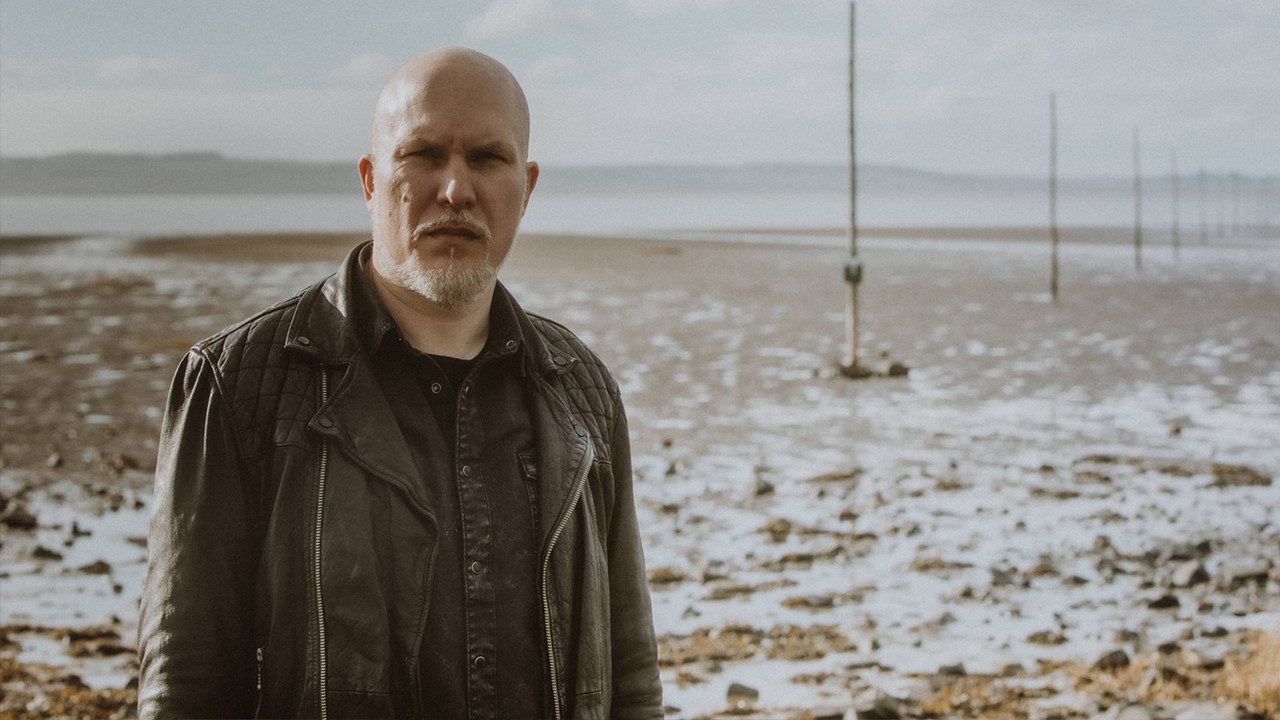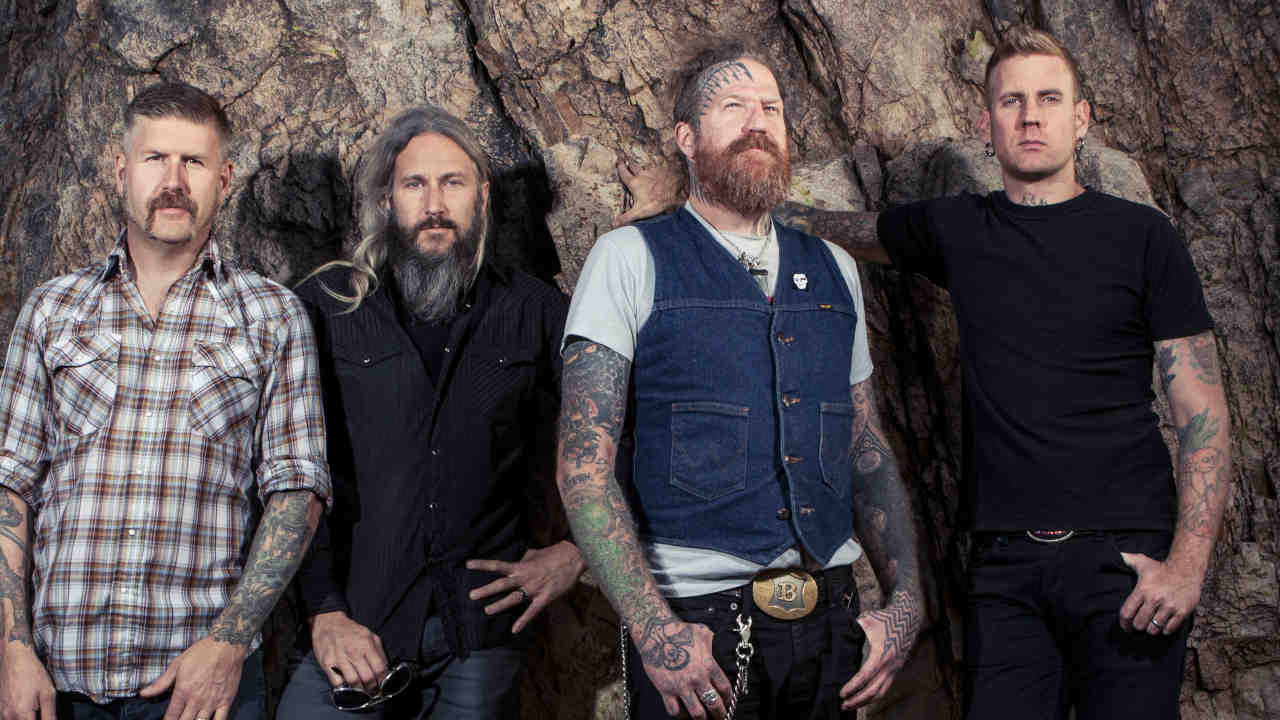Monastic doom voyagers Arð unearth the dark legends of Northumbria
Winterfylleth offshoot Arð reveal the uncanny tale of St Cuthbert with a video for their new album, Take Up My Bones

While the metal world is awash with Viking sagas, markedly less attention is given to the cultures they interacted with. Or pillaged from. Hailing from north England, in what was, for 300 years, the frequently raided Anglo-Saxon kingdom of Northumbria, Winterfylleth keyboardist Mark Deeks has taken a deep dive into the legends of the region with his doom project, Arð (Old English for ‘native land’).
Steeped in solemn, monastical atmospheres, and aided by in-demand cellist, and occasional Winterfylleth collaborator, Jo Quail, Arð’s forthcoming debut album, Take Up My Bones focuses on the dark tale behind the seventh-century, canonised monk, St. Cuthbert.
A powerful figure in his lifetime, and the subject of a religious cult after his death in 687, not least due to his remains supposedly refusing to decay, his body was removed by his fellow monks from its original resting place in Lindisfarne after a series of Viking raids and carried across the region for two whole centuries. Carrying a sense of perpetual yet transcendental burden, Take Up My Bones resonates acutely with its subject matter, adding new dimensions to the rich tradition of glorious Northern trudgery,
Take Up My Bones is released on February 18 via Prophecy Productions, but Louder has an exclusive preview in the form of a motion animated video for the epic title track, along with an interview with Arð mastermind Mark Deeks himself, as he discusses the power of legends, the thin line between a blessing and a curse, and why monks are true doom.

Other bands have found correlation between doom and Christian, or Biblical themes such as Trouble and Candlemass. How did you see the relationship when making this album?
“I knew that this was never going to be a religious album in any way – I’m far too much of a cynic for that! The main thing for me was that, even just on the surface, the story of St Cuthbert’s bones after death couldn’t be any more doom. Here’s a tale of monks trudging around the countryside from place to place for a couple of hundred years carrying a coffin, I mean how doom do you want? Throw in the fact they were trying to protect their most prized treasures from Viking invaders, and I felt pretty confident that metal fans would enjoy the story as much as I did.
“I’m much more interested when music works on lots of levels. I love the atmosphere Candlemass create and the soaring melodies. Then as a fan, if I want to go and investigate their lyrical themes too, I can. For Arð I wanted it to be the same: first I wanted to create an atmosphere by balancing the multiple layers of intertwining melodies and harmonies, with the crushing monastic doom. Then if you want to dive into finding out about the stories and legends surrounding the history of Northumbria’s most important Saint too, then there is much to discover.“
Sign up below to get the latest from Metal Hammer, plus exclusive special offers, direct to your inbox!
Why is Northumbria such a significant place?
“It’s strange how Northumbria's contributions to British identity and history are often largely overlooked. It is a region that has historically played an important cultural role, not least by its flourishing monastic culture in the early medieval period, which is referred to in the album's concept revolving about the relics of St. Cuthbert.
“Of course, one of the most important things that Northumbria contributed to our history and identity – and one that is connected to the story in the album – is the creation of the Lindisfarne Gospels, commonly accepted as having been written in honour of Cuthbert. In it you can see the effect of the influence of the range of cultures that had attempted to take control of the region, including the Saxons, the Romans and the Celts. The Gospels are usually housed in the British Library, and is often acclaimed as the most spectacular surviving manuscript from the period.“

Was it the character of Cuthbert or the legend he bequeathed you found most inspirational? Are there any lessons you can draw from it that resonate today?
“To me it was the opportunity to give a totally different interpretation to the story that was most interesting. The journey that Cuthbert’s followers took with his bones from Lindisfarne to Durham would have been extremely long even during modern times. We can only imagine how difficult it must have been during a tumultuous period littered with Viking raids and various groups struggling for control in northern England.
“Obviously, those of a Christian inclination are likely to see the acts of Cuthbert’s followers as one of extreme devotion to their Saint, protecting his remains and a range of other sacred treasures at all costs. However, I wanted to reframe the story: what if Cuthbert’s instruction to his followers to “take up my bones from this place” wasn’t a blessing being given only to the most staunchly faithful, what if they were being cursed to wander potentially dangerous lands for nothing more than to protect a dead hermit’s bones? That’s where the story starts in the lyrics of the first track on the album Burden Foretold, with my interpretation of Cuthbert’s orders: ‘Here is your sorrow, here is your curse.’”
Was there any particular site in Northumbria that gave you particular inspiration, and why?
“Northumbria is full of stirring landscapes, impressive castles and ruins, and vast stretches of striking coastlines and beaches; it’s impossible to not be inspired by this region. I’ve long had an interest in music that represents elements of the land and people it came from, and have written about this fascination academically covering bands from northern and eastern Europe such as Tyr, Falkenbach and Drudkh. I knew that I wanted a tale that was intrinsically Northumbrian, and the tale of Cuthbert’s bones worked on so many levels. It starts at one of the most important locations in the region, the remote Holy Island of Lindisfarne, where the Vikings would later first invade Britain, takes in a long journey via what we now know as the striking Cuthbert’s Cave, and ends in the historical city of Durham. By the time I read more about some of the mysterious events and legends surrounding Cuthbert’s remains that are said to have happened, I knew that this was the perfect Northumbrian story to introduce Arð.”
What do those legends tell us about ourselves?
“I love reading various mythologies and poetry from across northern Europe such as the Norse texts, the Kalevala from Finland, the Icelandic Sagas, and of course the Anglo Saxon texts. I really enjoy the different styles of literary collision between historical tales, attempts by the cultures to make sense of their world, and the elements of magic, mystery and myth. I think it’s interesting as a reader to try to unpick which is real, which is an allegorical representation of something real, and that which is pure myth. We can certainly learn a lot about these different peoples from what they committed to paper.”
You’ve worked with Jo Quail in Winterfylleth. What did she bring to the album?
“I knew that cello was going to play a hugely significant role in the music; this wasn’t a token afterthought. The cello has a haunting character unlike any other instrument, and the multiple melodic layers that I had written needed a cellist who could tap into the mournful atmosphere of the story. Put simply for me there could have been no one else to bring the cello lines of Arð’s music to life than Jo.
“There was a moment in the studio when we were recording what, for me, is the centrepiece of the album, Raise Then The Incorrupt Body. The end section is a huge, soaring sound with everything going on and then suddenly everything stops and you are left with three layers of Jo on her own. The first time I heard that was a real goosebumps moment and I remember calling it a symphony of Jo’: there will always be a place in Arð’s music for Jo as long as I have my way!”
Arð’s debut album, Take Up My Bones, is released on February 18 via Prophecy Productions
Pre-order the album in digital, CD, artbook and vinyl versions
Having freelanced regularly for the Melody Maker and Kerrang!, and edited the extreme metal monthly, Terrorizer, for seven years, Jonathan is now the overseer of all the album and live reviews in Metal Hammer. Bemoans his obsolete superpower of being invisible to Routemaster bus conductors, finds men without sideburns slightly circumspect, and thinks songs that aren’t about Satan, swords or witches are a bit silly.

